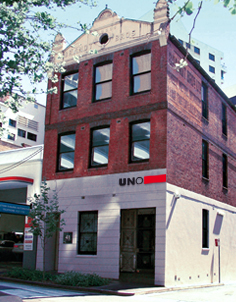You can be tomorrow’s business success story. Just add Bernard Salt
Bernard Salt earns a living as a demographer. That’s the art of taking research data and painting a picture of who we are and what we think and do. Before you tune out thinking he’s just another propeller head making money off the back of lies, damn lies and statistics, consider for a moment what you’d give as a business to know where the next big opportunity for making money is, before it happens.
How do entrepreneurs know where to invest today in what will be the sweet spot tomorrow? What did the savvy few who bought franchises in McDonalds in the eighties know? Or the food services that were ready to be part of café culture as we left tea drinking behind?
If you were a tea manufacturer in the 70s Australia’s demographics could have predicted that your volumes were about to decline. The move from a society of tea drinkers to the blossoming of café culture at the turn of this century was a consequence of something that happened in the 1950s. The wave of immigrants from Italy and Greece post war had kids, grew wealthy and infused our Anglo society with a Mediterranean café culture which saw Australians move onto the footpaths and embrace machiattos and cappuccino with biscotti in preference to sitting indoors with a cuppa Bushells and an iced Vovo.
At a Family Business Australia breakfast, Bernard explained the simple truth that the composition of Australia is what drives business growth. And decline. Seems obvious, yet even the high fliers at BHP and the big four banks pay Bernard to keep them abreast of what should be self evident. It’s easier to grow a business and be profitable in a category of growing demand than to compete for a share of a shrinking one.
Change managment – there's money in tea
Follow the demographic trends that will shape what Australians will look like in the next decade and consequently what consumers will be asking for. Today there is a shift away from European immigration to Asian as these stats on fastest growth and loss by place of birth show.

Prediction: Start thinking about tea and noodles not coffee and pasta.
Super was yesterday’s money maker
In the last decade the biggest growth in financial services has been in superannuation. The SMSF category has doubled its share to be the largest segment at huge cost to growth of retail funds as boomers take more interest in their money in super. Industry funds have also grown share with a low fee proposition and the locked in stream of contributions via the super guarantee levy from a membership base that traditionally wasn’t saving much. But that’s today’s boom business, tomorrow it will change, again because of a shift in demographics.
The makeup of working Australia is about to fall off a cliff, as the boomers retire and are replaced by… no-one:

The age at which boomers will retire, now on average 58, as well as the length they can expect to live has also profoundly changed in just a generation:

Prediction: Cashed up retirees who will live for 20+ years will want to travel, eat out, be entertained, live in a city apartment or by the sea and to pay for it all need a retirement pension plan that will last the distance. They’ll be looking at ETFs and annuities.
Bernard Salt has a pretty good idea of what tomorrow looks like. It’s up to you to see how you can position your business today to be ready to reap the rewards of a growing market category before it’s the next big thing.



Scan the QR code for our contact details.
Download the Neoreader app.
© COPYRIGHT 2013 UNO marcomms Privacy